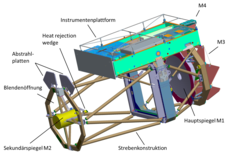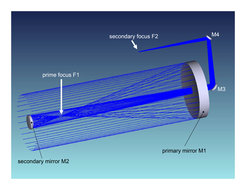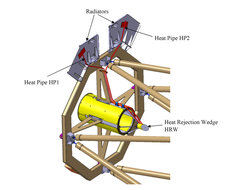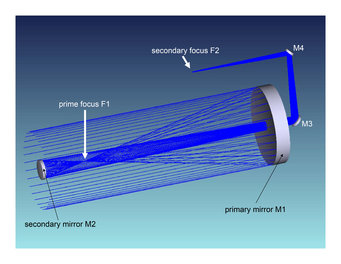The SUNRISE Telescope

SUNRISE telescope with mounted post-focus instrumentation on its transport dolly during justifications in an MPS clean room

Optical path of the SUNRISE telescope

Heat rejection wedge and cooling system


